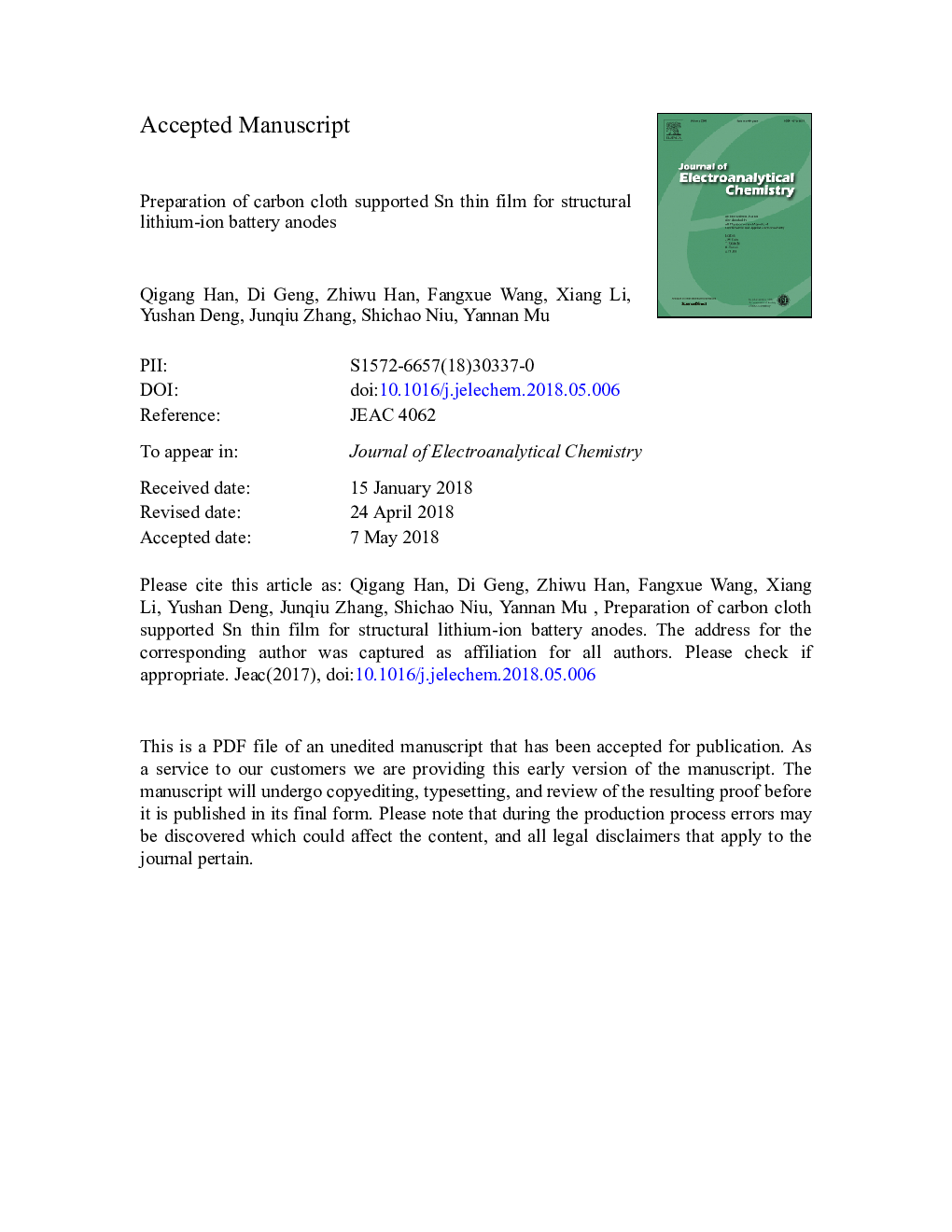| Article ID | Journal | Published Year | Pages | File Type |
|---|---|---|---|---|
| 6661572 | Journal of Electroanalytical Chemistry | 2018 | 17 Pages |
Abstract
Commercial carbon fibers have been studied in structural lithium-ion batteries (SLIBs) with good promises. However, the currently urgent issue is the limitation in capacity in today's SLIBs. In this work, we focus on fabrication of integrated Sn/carbon cloth (Sn/CC) composite with Sn nanoparticles uniformly coated onto the surface of the CCs with close connection between them. Due to the combined superiority of the Sn with high theoretical specific capacity and the carbon cloth with good conductivity and buffer effect, the prepared Sn/CC composite are expected to be employed as an anode material for future SLIBs. As a result, even though in high mass loading up to 5.19â¯mgâ¯cmâ2, a high reversible capacity of 2.23â¯mAhâ¯cmâ2 (i.e. 431.5â¯mAhâ¯gâ1) is maintained over 100â¯cycles at a current density of 100â¯mAâ¯cmâ2, showing a huge increase almost 3.3 times as high as the reported carbon fibers in SLIBs. Furthermore, even at a high current density of 2000â¯mAâ¯cmâ2, the discharge capacity can still reach to 1.18â¯mAhâ¯cmâ2. These good electrochemical performances in capacity could urgently solve the current issue that the limitation of capacity in current SLIBs when using commercial carbon fibers as anode materials.
Keywords
Related Topics
Physical Sciences and Engineering
Chemical Engineering
Chemical Engineering (General)
Authors
Qigang Han, Di Geng, Zhiwu Han, Fangxue Wang, Xiang Li, Yushan Deng, Junqiu Zhang, Shichao Niu, Yannan Mu,
